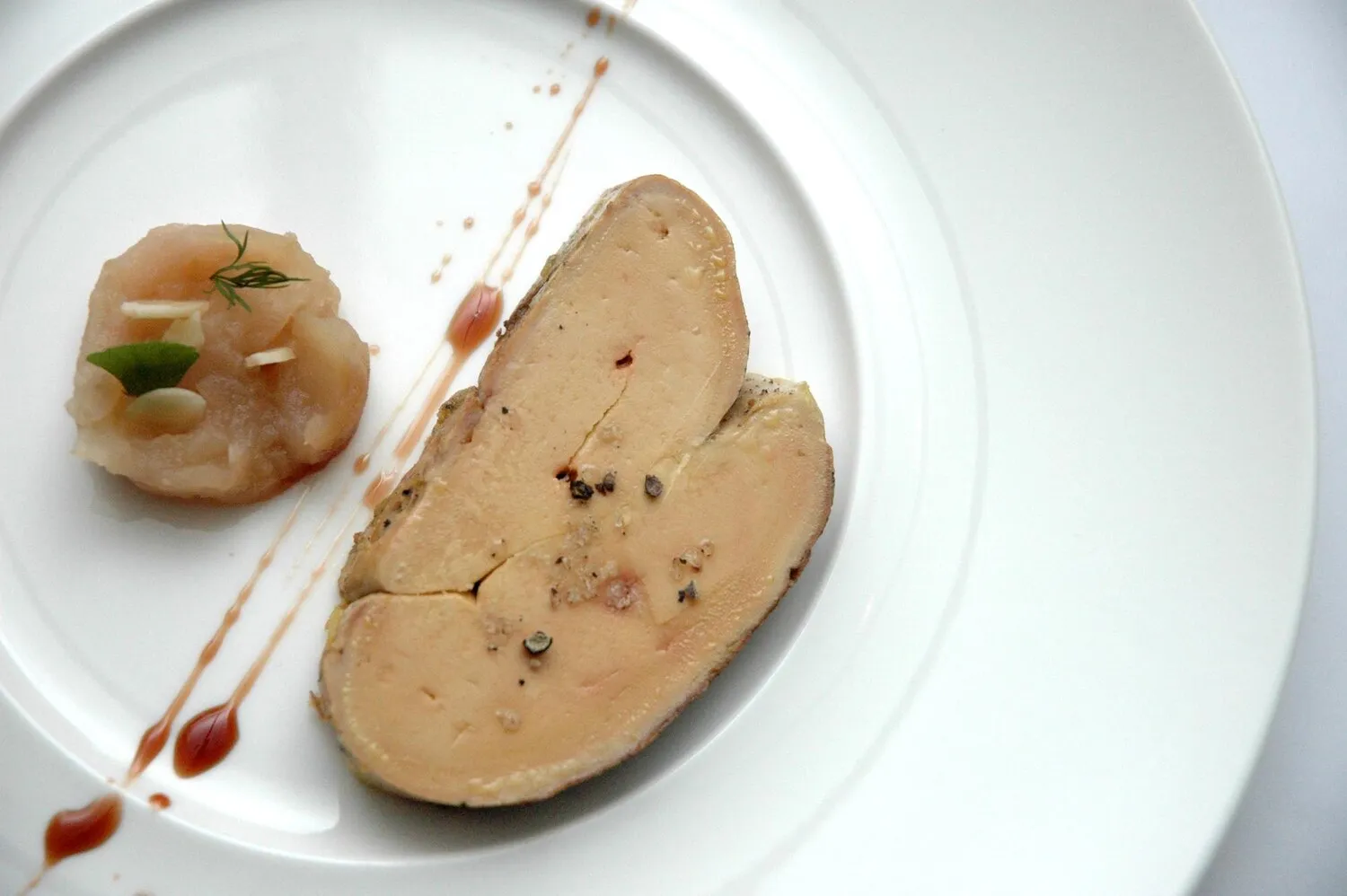
Foie Gras
Foie gras dish
Nutrition Facts
* The % Daily Value (DV) tells you how much a nutrient in a serving of food contributes to a daily diet. 2,000 calories a day is used for general nutrition advice.
Foie gras has a history dating back to ancient Egypt, where evidence suggests the practice of force-feeding birds for enlarged livers existed. The practice was later adopted and refined by the Romans. However, it was in France that foie gras truly became a culinary art form, particularly during the reign of Louis XIV, solidifying its place in French gastronomy and luxury cuisine.
Foie gras is a symbol of French culinary excellence and luxury, often associated with special occasions, fine dining, and sophisticated palates. It represents a tradition of culinary craftsmanship and the appreciation of rich, flavorful experiences. However, it is also a controversial dish due to ethical concerns surrounding its production.
Gastronomic Symbol
Foie gras is considered a cornerstone of French gastronomy and a national treasure, representing a commitment to quality and refined taste.
Luxury and Celebration
It is often served during celebratory meals and special occasions, symbolizing affluence and indulgence.
Controversy and Ethics
The production methods involved in foie gras have led to significant ethical debate and legal restrictions in some regions, raising questions about animal welfare.
Foie gras offers a rich and decadent flavor profile, characterized by its buttery smoothness and delicate, savory notes.
The primary flavor of foie gras is intensely rich and fatty, with a creamy, almost melt-in-your-mouth texture. It has subtle nuances of sweetness and earthiness, often enhanced by preparation methods such as searing or pâté-making. The flavor can be complemented by pairings with sweet wines like Sauternes, or contrasting elements like fig jam or toasted brioche to balance the richness.
Searing Technique
When searing foie gras, ensure the pan is hot but not smoking. Score the surface lightly to prevent curling and sear for a short period on each side until golden brown and slightly softened, but not melted completely.
Pairing Suggestions
Foie gras pairs exceptionally well with sweet accompaniments such as fig jam, fruit chutneys, or Sauternes wine. A contrasting element like a tart apple or a slice of toasted brioche can also enhance the overall experience.
Serving Temperature
Serve foie gras slightly warm, not hot, to allow its flavors to fully develop without becoming overly greasy. Pate should be served chilled.
Explore additional Modern dishes and restaurants
Explore ModernDiscover top dining spots and culinary experiences in Bilbao.
Explore BilbaoLearn more about the food culture, restaurant scene, and culinary heritage of Spain.
Explore Spain